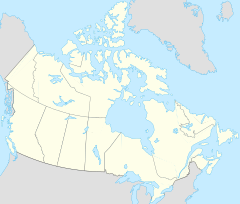Queen Maud Gulf Migratory Bird Sanctuary facts for kids
Quick facts for kids Queen Maud Gulf Migratory Bird Sanctuary |
|
|---|---|
|
IUCN Category Ib (Wilderness Area)
|
|
| Location | Nunavut, Canada |
| Nearest city | Bathurst Inlet |
| Area | 61,765 km2 (23,848 sq mi) |
| Established | 1961 |
| Governing body | Environment Canada |
| Official name: Queen Maud Gulf | |
| Designated: | 24 May 1982 |
| Reference #: | 246 |
The Queen Maud Gulf Migratory Bird Sanctuary is a very special place in Canada. It is Canada's largest protected area owned by the government. This huge area covers about 61,765 square kilometers (that's about 23,848 square miles!). It stretches along the Arctic Circle coast.
A big part of the sanctuary, about 6,710 square kilometers (2,591 sq mi), is ocean water. The rest, about 55,055 square kilometers (21,257 sq mi), is land. This makes it a vital home for many birds.
Contents
What is a Ramsar Site?
In 1982, this sanctuary was named a wetland of international importance. This happened under an agreement called the Ramsar Convention. This agreement helps protect important wetlands around the world. The Queen Maud Gulf Migratory Bird Sanctuary is actually the second-largest Ramsar Site on Earth!
Landscape and Wildlife
Most of the sanctuary is made up of flat lands called lowlands. You can find countless streams, ponds, and shallow lakes here. The land is mostly Arctic tundra and marshes. Tundra is a cold, treeless area where the ground stays frozen most of the year.
This sanctuary is super important for birds. In 1982, about 450,000 geese nested here. This included most of the world's Ross's geese. It was one of the biggest groups of geese anywhere on Earth!
How the Sanctuary Started
The Queen Maud Gulf Migratory Bird Sanctuary was created in 1961. It was set up under rules from the Migratory Birds Convention Act of 1917. This act helps protect birds that travel between Canada and the United States. The sanctuary was named after Queen Maud of Norway.
Are There Any Threats?
Right now, there are no big threats to the Queen Maud Gulf Migratory Bird Sanctuary. This is because it is a protected area owned by the Canadian government. This protection helps keep the land and its wildlife safe.


